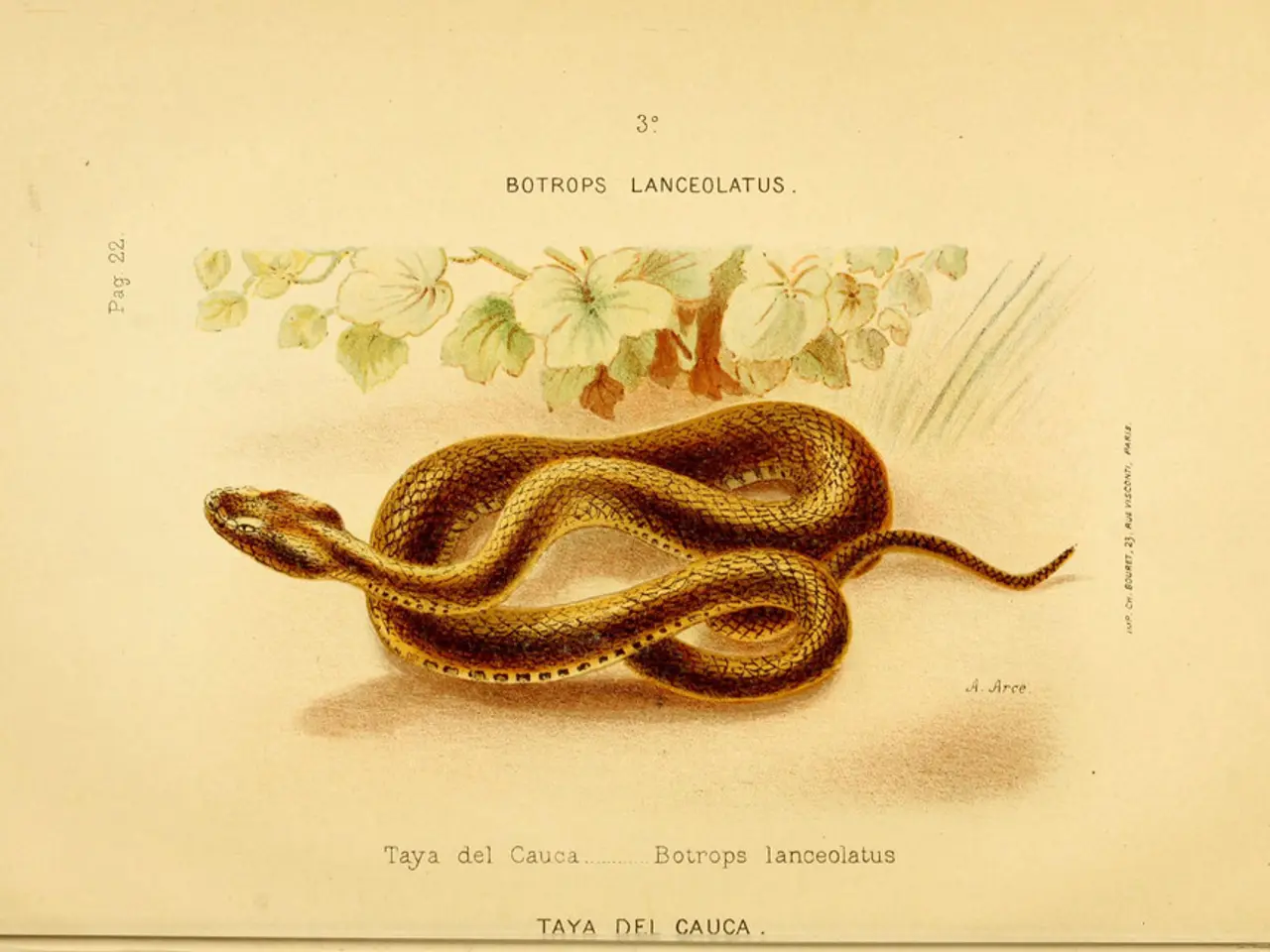\"Beware of Viper's Tail!" - But Venomous Snake is Also Endangered - Viper's Cross, Germany's Only Venomous Snake, Facing Severe Decline
The viper's cross, Germany's only venomous snake outside the Black Forest, is facing a severe decline. Once common in moorlands and mid-mountain ranges, it's now classified as 'strongly endangered' and even 'critically endangered' in some regions. Its bites, once frequent, are now rare, with only around 20 calls to the Poison Information Centre North annually.
The viper's cross, distinguished by its dark zigzag band and vertically oriented, slit-like pupils, is under threat due to habitat loss, climate change, diseases, and lack of corridors between areas. It primarily inhabits moor and heath areas, mid-mountain ranges, and the Alpine region, feeding on frogs, mice, and lizards. Despite its venomous nature, bites are not life-threatening and antivenom is rarely used. Medical treatment and observation are typically recommended.
In recognition of its plight, the German Society for Herpetology and Terrarium Keeping (DGHT) and Nabu named the viper's cross the 'Reptile of the Year 2024'. However, the reasons behind this selection and the critical role of undisturbed habitats for this reptile remain unclear.
The viper's cross, once a common sight in Northern Germany, is now a rare and endangered species. Its decline, driven by various factors, has led to a significant reduction in its bites. Conservation efforts are crucial to preserve this unique reptile and its habitats.






